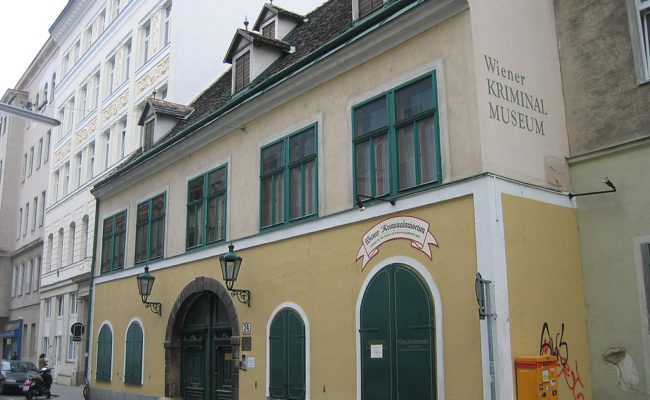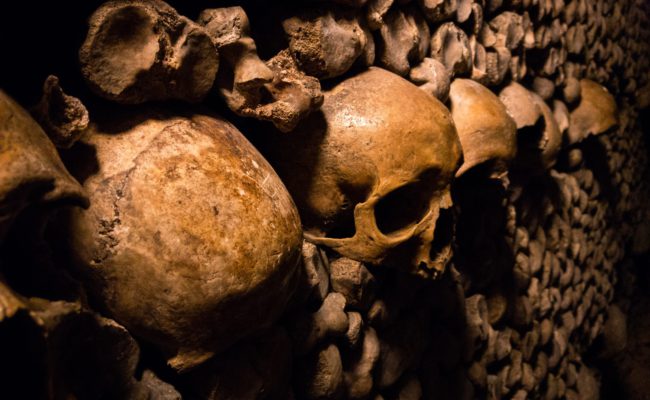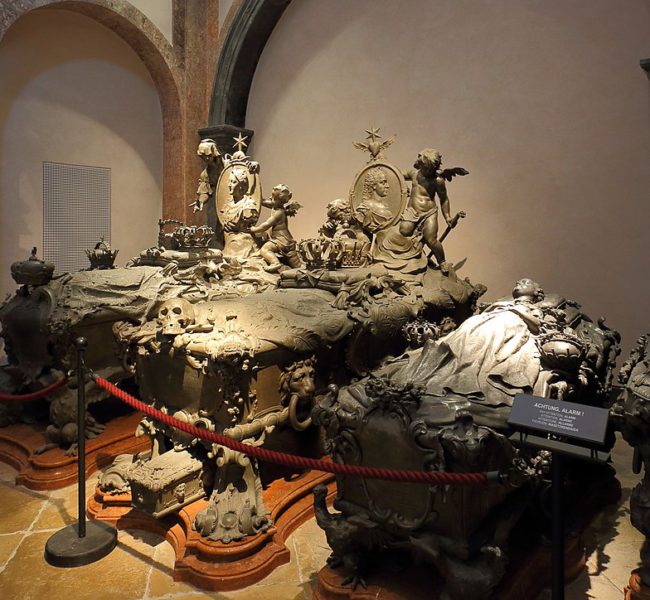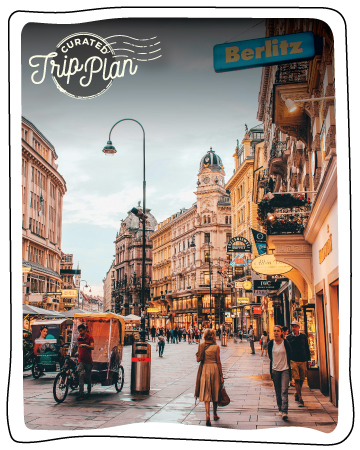Friendly disclaimer! We want to be as accurate as possible, but given these challenging times, we urge you to recheck that the venues are open when you decide to travel.
Most often, Vienna brings to mind images of cultural and civilizational glory: of Roman, Renaissance history and the likes. Could words such as ‘gore’, ‘Goth’, and ‘dark’ describe some of these images too? If this list is anything to go by, then yes! If you’d like a refreshing take on medieval history, or are interested in the ‘weird’ and ‘unsightly’ then this is for you. Disclaimer: It might even cause you to rethink old history lessons.
The Narrenturm (ed. 1784)
Quite literally meaning ‘fools tower’, the Narrenturm was probably one of the first ‘mental’ asylums or institutions . This enormous circular building (known locally as pound cake) thankfully does not hold captives anymore. But one can still witness some discomfiting relics from the past.
Syphilitic skulls, defaced fetuses in jars, and untreated STDs demonstrated graphically through wax displays, are few of the sights one can witness. If human relics aren’t enough, check out the taxidermy monkeys and tusks of narwhals. The enormous head of a Hydrocephalic skeleton, towards the end of the museum would also be hard to miss.
Prices: Adults – €2,00
Opening times- We, 10:00 – 18:00, Sa, 10:00 – 13:00
Closed on holidays
Unravelog Tip- If wax anatomical models interest you, visit the nearby Josephinum Medical Museum, the. For a guided tour in English, go on Saturdays. However, these are at 11 a.m. so you’d have under an hour for the Narrenturm.

Kriminalmuseum (ed. 1685)
Crime, murder, and punishment were commonplace in the Middle Ages and quite fascinatingly so for many reasons. The Kriminalmuseum in Vienna, Austria documents just this. It is housed in one of the oldest buildings in the Leopoldstadt area; the “Seifensiederhaus,” or “Soap Boilers House”.
Learn all about the penal system of the Dark Ages, including the last public executions of Vienna. Get to know about some of the most popular criminal cases of old such as the murder attempt on Austrian Emperor Kaiser Franz Josef and the development of the “Criminal Investigation Department”. Austrian political criminality is well documented, ranging from 19th-century bourgeois coups to assassination attempts on the Imperial family.
Unravelog Tip: If you’re interested in learning about the exhibits, get someone fluent in German to accompany you, to translate the informational signs and old newspaper articles.

Stephansdom catacombs
Right in the centre of Vienna City, is located the imposing Gothic structure of St. Stephen’s church. Not many outsiders will know that it also hides a deep, dark history beneath it.
The Stephansdom Catacombs, located beneath the church is a vast underground network of smaller crypts and burial spots. It houses bodies, skeletons, body parts , relics and altars of Vienna’s bishops, clergy and other high-ranking nobility. Ducal Crypt is another section where Vienna’s royalty had their body parts (such as hearts and intestines) and bones stored. The years of the Bubonic Plague from 1735 onwards were significant in that several bodies buried in surrounding cemeteries were transferred here. Later it was ordered that the flesh of their diseased bodies be taken off and only their bones and skulls be arranged in systematic rows. The job was never completed or perfected – one can still sight some bones and skulls in disarray. It is still an active burial tomb – Franz Cardinal König, a former Viennese Archbishop being the latest to be put to rest here in 2004.
One can still get to witness some of them on the catacombs tour. It starts by following the stairs down to the crypts and being welcomed by a well-illuminated chapel. The tour proper begins just beyond this, where the old catacombs are. Though they’re over 650 years old, the setting is modern and neat due to renovations.
Unravelog Tip: If you are also interested in viewing St. Stephen’s Cathedral and its other attractions (such as the North Tower and South Tower), you can book an all-inclusive ticket before your visit.

Habsburg Imperial Crypt (Capuchin Crypt)
By now, you must have a pretty good idea of how death was given a somewhat ‘larger-than-life’ place in Vienna. This is also quite apparent in Viennese art, song, and poetry. Morbid memento-mori sculptures can be spotted throughout the city.
The death of an emperor or empress was also a major event. And at Capuchin, one gets the chance to get up-close and personal, quite literally, with the prominent Habsburg dynasty. 12 emperors, 18 empresses, and 113 other members of the Habsburg family are interred in the Imperial Crypt (Kaisergruft), known in German as the Kapuzinergruft (“Capuchins’ Crypt”). While Habsburg monarchs were put to final rest in an elaborate sarcophagus at the Imperial Crypt, their hearts are preserved in silver urns and reliquaries store their embalmed entrails.
As recently as 2011, Archduke Otto, the last Hazburg and Crown Prince of the Austro-Hungarian Empire, was interred in the Imperial Crypt following his death.
Unravelog Tip: Not to be cryptic, but the air-conditioned Capuchins’ Crypt is ideal for escaping the summer heat in Vienna.

Cemetery of the nameless
By now we’ve gone over places housing dead people belonging to the general public, royalty, as well as ones declared ‘insane’. We’ve still chosen the Friedhof Der Namenlosen, or the Cemetery of the Nameless among the 55 other cemeteries of Vienna, for good reason.
If you’re a fan of ‘Before Sunrise’, the film, then you wouldn’t want to miss this spot. Yes, a scene was shot right here. Located in Simmering district, quite far from the city center, the trip here may feel like a pilgrimage. The cemetery sits forlornly on a hidden patch wedged in between an industrial/harbour estate, the Alberner Hafen, and the Danube’s southern riverbank (and its dyke). All of the 104 bodies here are those washed up from the Danube River, before 1940. The building of a new dock and huge grain silos and the changing currents of the Danube meant that no more bodies arrived here. Still, the cemetery was kept and preserved – mainly thanks to Josef Fuchs, previously volunteer gravedigger until 1939, who carried on looking after it till 1996.
Unravelog Tip: We highly recommend visiting on a Sunday, as the industrial estate next door is quiet then.
Vienna surely is a destination that deserves more time and attention. If you are keen on exploring this interesting city further, check out our detailed itinerary that unravels Vienna in 4 days.






